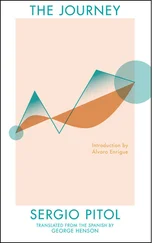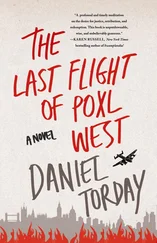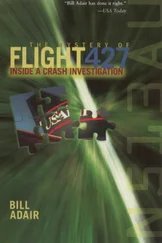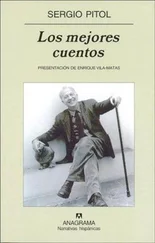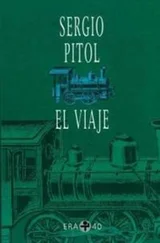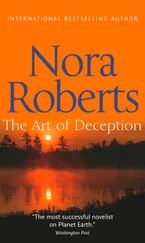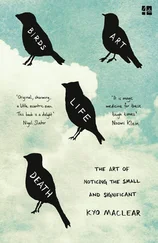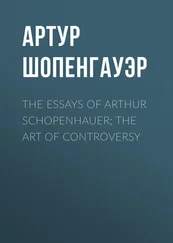The ideology of the current movement was amassed from the teaching of the catechists, from the action of some student groups who survived the repression of 1968, from the branches and stumps that broke off from the most radical leftist movement of the sixties and seventies, and from the despair and the abuse of the indigenous communities. It is not difficult to imagine the many controversies that have been produced, the suspicions, resentments, internecine ruptures, defenses of orthodoxy against the onslaught of the modern, over and over and again, until that once-unformed embryo succeeded in achieving a degree of coherent efficacy and manifesting itself in the armed movement that, as the Subcomandante said with undeniable awareness, was determined not to repeat the patterns of earlier guerrillas.
The next-to-the-last day of our stay in Chiapas, Paz and I visited San Juan Chamula, that is, his church, that indescribable place where among the assorted stench of alcohol, wax, incense, urine, and sweat one approaches ecstasy. It takes time to grow accustomed to that undulating chiaroscuro. The light comes from hundreds of candles, votives, and tapers placed in different places and at different heights. There are areas that remain forever in the shadows. It was Sunday. A mass baptism was being celebrated. Dozens of infants were screaming in unison. Entire families apostrophized loudly, furiously, before this or that altar, this or that saint, as they passed bottles of aguardiente from hand to hand. A decrepit old Indian woman carded the wool-like hair of small children who rolled nimbly on the floor, which made the task of picking their lice more difficult. A ceremonial procession of dignitaries, the village stewards, dressed in their Sunday best, roamed the premises. They beat the floor with their canes, made speeches in their language, bowed first to one side and then the other, then continued their rounds in ritual step. In a corner, a couple slept sprawled on the ground, the man still had a bottle of aguardiente in his hands; several children, surely theirs, intoned a sad, monotone song. And above and beside the crowd of the vivid, haggard, and moribund chatterboxes, the sacred was imposed. They must have prayed this way once in the Roman catacombs and temples built to the new faith in Antioch and Trebizond. The shepherds would arrive with their animals and skins of wine; they would pray and sing until reaching a delirium that united them with that which was higher than themselves. And in San Juan Chamula, beside us, all this continued to live and was amazing and terrible, luminous and crepuscular. I emerged from there as if I were far away, as if I were exiting a thick, mottled dream, and while still in this state Paz Cervantes put me in the car and took me to Zinacantán, a clean and prosperous town, which in those parts was a miracle.
In the village church, small and ascetic, unlike the whirlwind we had just left, there was only a couple, most certainly married; the husband and wife, very young, were wearing clothes embroidered in splendid colors. There were also in the church a couple of children, five or six-years-old, the children of that exceptionally attractive couple. When we arrived the husband and wife were kneeling before the main altar, praying; the children sat in the front row, behind their parents, just a step away. Suddenly, the man let out a horrible, terrifying howl. Upon hearing this, the woman began to wail in anguish. Later, it was she who howled; she became a thunderclap, a whip, a relentless storm, while he rolled on the floor, crying, babbling, and pleading. Later, both of them began to moan in unison, prostrate on the stone floor. This was only the introit. They recovered suddenly, jumped up, and began to run around the walls, each in opposite directions; they crossed and kept running, screaming and crying like two desperate souls. The pain was excruciating, indescribable, unbearable. It felt as if staying there would give me a heart attack. Paz’s cheeks were awash in tears. At one point, the children, who until then had behaved normally, like spectators at a play they had already seen, walked up to us as if they knew us, and one of them, the eldest, I think, said to me: “¡Dame chicle!” “Give me gum!” I said I didn’t have any, but he returned to the charge: “¡Dame un lápiz!” “Give me a pencil!” I gave him a disposable pen, and they returned calmly to their seat as if the parents’ wailing and mourning didn’t faze them. We, however, left the temple like cockroaches that had just been given a beating. What had just happened? What was that? Suffering caused by unavoidable misfortune? The death of a close relative? An unspeakable offense that brought terrible dishonor to them and their relatives? The knowledge that one of them was suffering from a disease from which he would soon die? Or was it merely a routine ceremony, a form of catharsis that was elicited from time to time and for which the community had left them alone in church that Sunday? Just as before in San Juan Chamula, I had the feeling of moving through a strange land, in Ultima Thule, where reason was reduced to the ineffable. The enormity of my gaps was revealed to me. One learns something always in fits and starts, in fragments, he’s aware of effects, but when he can’t identify the causes it is as if he didn’t know anything. When was the Christian liturgy that we know today standardized? What elements could be defined as Christian, and which were Quiché or Maya in these religious practices? Which were added in the last five hundred years? When everything has passed — and hopefully everything goes well! — I promised myself that I would return to San Cristóbal de Las Casas and San Juan Chamula and to Zinacantán. But then I will be better informed, with more readings to be able to discern a bit of its reality.
We returned that night to San Cristóbal. We dined for the last time in the restaurant in our hotel. We said hello to a great deal of journalists and members of non-governmental organizations, some friends from many years ago, and others we’d met during the last few days. The restaurant and bar are like a scene from a motion picture. It could be Saigon, for example, during the Vietnam War. There were war reporters and television teams from many countries. All the major languages were being spoken. According to what we heard, some of them had managed to penetrate the jungle and visit the Zapatistas. It was not clear whether it was in jeeps or on foot. They took on a mysterious air as they spoke about their experience; they seemed to imply that any misstep could jeopardize their contacts; it would be denouncing them. They themselves are amazed at what is happening. They came to Chiapas with little or no sympathy for the guerrillas. They were only interested in finding out what had happened, why that hiccup in the Mexican economic miracle and Free Trade Agreement had occurred. The guerrilla no longer enjoys the prestige that it did in the fifties or sixties. On the contrary, all of Che’s followers ended up being inept or fanatics. And suddenly they’ve found a person and a situation they did not expect. Of course, the monstrous presence of extreme poverty in which the Indians live and the always active racism of the white landowners are the appropriate framework for this young masked man whose language is different from all previous guerrilla leaders. Among the various registers he handles — and this truly is unbelievable! — is humor.
After talking about the still incipient charisma of the Subcomandante, the conversation in every restaurant and bar in San Cristóbal branches off, but not too far. When were the negotiations finally going to take place? What role would the Bishop of San Cristóbal play in them? Would it end in a win for Camacho Solís? Would Camacho still have complete official support? Could it be true that cracks had appeared in the Mexican political system?
Читать дальше

